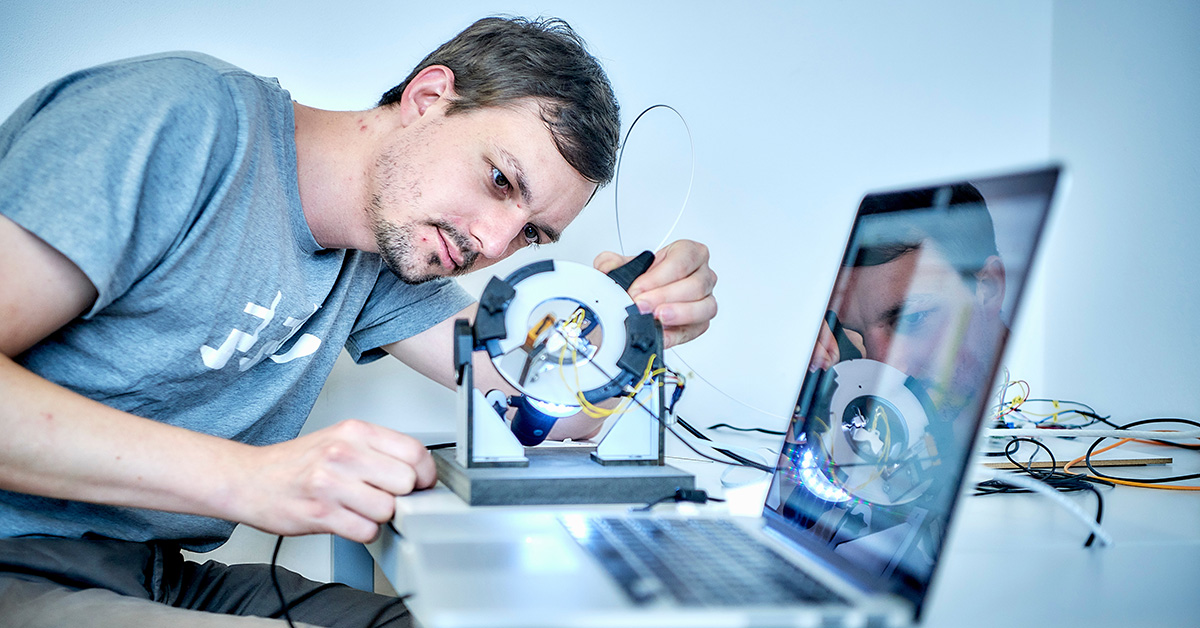2021/02/26 | Research | Surgical technologies
Improved cochlea models for CI insertion experiments
Simulating cochlear implant (CI) insertions in artificial models is challenging, especially because the mechanical properties of real specimens are difficult to reproduce. To facilitate CI insertion experiments, the Hearing Research Lab of the ARTORG Center and Inselspital has now developed a method to produce human anatomy-based models of the scala tympani for realistic insertion experiments, relying on commonly available materials and tools and based on publicly available data.
 Philipp Aebischer with the setup for automated cochlear implant insertion experiments.
(Photo: Adrian Moser © University of Bern)
Philipp Aebischer with the setup for automated cochlear implant insertion experiments.
(Photo: Adrian Moser © University of Bern)
In a technical note, published in Hearing Research, the team describes the fabrication of electrode array dummies and scala tympani models that address shortcomings of previously published cochlear models. They particularly improve the reproduction of frictional properties with an easy-to-apply polymer brush coating that creates hydrophilic surfaces and produce geometries with accurate macro-anatomy based on microtomographic scans.
Validation showed very good agreement of insertion forces both in terms of linear insertion depth and insertion speed compared to previously published measurements of insertions in cadaveric temporal bones.